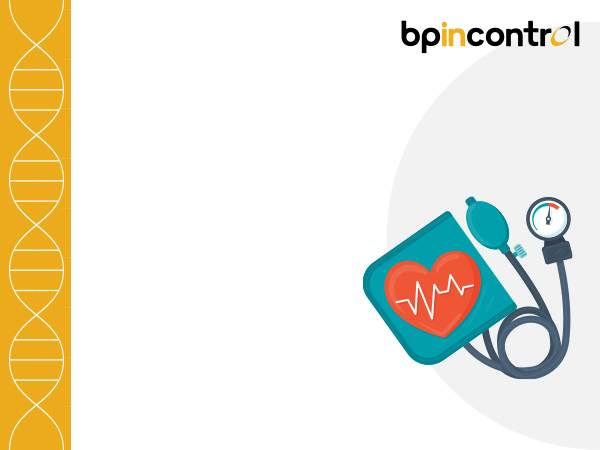Breathing Techniques That Lower Your Blood Pressure

Table of Contents
Ever wonder why people around you ask you to take deep breaths when you are experiencing any type of stress, anxiety or restlessness? Well, it’s not just a way to distract you but has some solid science behind it! Stress is known to be a great contributor to the rise in blood pressure. And a reduction in stress can frequently lower blood pressure. Now, where does breathing come into the picture? Taking slow, deep breaths is the oldest and best-known technique to reduce stress, thereby helping manage high blood pressure.
Relation between stress, breathing and blood pressure
Words like work pressure, deadlines, job anxiety, issues at home, and stress have become synonymous with our fast-paced lifestyle. And all these issues can possibly culminate in hypertension. It has become a common sight these days, with an estimated 1.28 billion adults worldwide suffering from this condition. As grave as these numbers appear to be, practising certain simple breathing techniques can be of great help in managing this condition.
Taking slow, deep breaths can activate your parasympathetic nervous system, which further decreases your heart rate and dilates your blood vessels. This leads to an overall reduction of your blood pressure. As your breathing slows down, your brain associates it with a state of relaxation. Thus, having a calm breathing pattern is a sign for your body to lower blood pressure.
Types of breathing techniques
One of the best tips to lower blood pressure is to include one of the following breathing techniques in your daily routine. It shouldn’t be something that you do only while experiencing stress but, in fact, should be used as a preventative measure. Studies have shown that including 5-minute breathing exercises each day can lower your blood pressure and the risk of having a stroke. Take a look at the breathing techniques given below and choose the one that works best for you!
- 4-7-8 breathing exercise
The magical formula of 4-7-8 can have exceptional benefits for your body. Also known as the “relaxing breath”, this technique involves breathing in for 4 counts, holding your breath for 7 counts, and exhaling your breath for 8 counts. Then you should repeat this sequence at least 3-4 times without resuming normal breathing in between.
Practising this technique promotes relaxation. In addition to that, it can also train your body to breathe more deeply on a regular basis. That way, your body is better oxygenated always and can have normal blood pressure.
- Equal breathing
Another well-known technique is that of Equal Breathing, wherein your inhalations and exhalations are of the same length. It helps improve focus, calms the nervous system, increases your lung capacity and helps you access your full breathing potential. To practice this technique, you need to breathe in and out through your nose throughout the exercise. This allows your stomach, chest and rib cage to expand with every breathing cycle.
You need to start by shutting your eyes and paying attention to your breathing. Post which, you need to inhale, taking a deep breath for up to 4 counts. Then you need to exhale deeply for up to 4 counts as well. While breathing, you need to be mindful of the sensation of fullness and emptiness in your lungs.
- Diaphragmatic breathing
Diaphragmatic breathing is a technique where you consciously use your diaphragm for deep breathing. It helps you use your diaphragm correctly and optimally while breathing. Usually, when you breathe, your lungs aren’t used to their full capacity. But this kind of breathing technique allows you to do that and increase your lung efficiency. It also strengthens your diaphragm, slows down your breathing rate, and reduces your oxygen demand and effort to breathe.
For practising the Diaphragmatic breathing technique, you need to sit or lie down on a flat surface and relax your shoulders by pushing them downwards. You then need to place one hand on your chest and the other on your stomach. Then without excessive pressure, you need to breathe in through your nose at full capacity. During this technique, you can actually feel the air moving through your nostrils into your abdomen, expanding your stomach and waist. While exhaling, purse your lips and exhale slowly through your lips for 4 counts. Repeat this several times.
- 30-sec breathing exercise
Practising this 30-sec deep breathing exercise daily can help reduce your stress and anxiety to a great extent, thereby helping you manage your hypertension. In this technique, you breathe in deeply for 4 counts, breathe out for 6 and repeat the cycle 3 times.
Conclusion
Although breathing techniques aren’t a replacement for blood pressure medications, they can definitely help manage it. Practising these techniques along with a few healthy lifestyle changes can help manage hypertension effectively. There aren’t any proven risks involved in practising these techniques. But if you do feel any discomfort while practising them, you must consult your doctor immediately.
In addition to this, it’s always advisable to consult a medical expert and seek treatment to tackle the problem of hypertension. And you can connect with some of the best doctors and leading experts through our comprehensive portal, BPinControl.
Disclaimer
The information contained in this article is to educate, spread awareness in relation to hypertension and other diseases to the public at large. The contents of this article are created and developed by BPinControl.in through its authors, which has necessary, authorisations, license, approvals, permits etc to allow usage of this articles on The Website. The views and opinions expressed in this article are views, opinions of the respective authors and are independently endorsed by doctors. Although great care has been taken in compiling and checking the information in this article, The Website shall not be responsible, or in any way liable for any errors, omissions or inaccuracies in this article whether arising from negligence or otherwise, or for any consequences arising therefrom. The content of this article is not a substitute for any medical advice. The Website shall not be held responsible or liable for any consequence arising out of reliance on the information provided in the article.


Comments (0)
No comments found.Add your comment